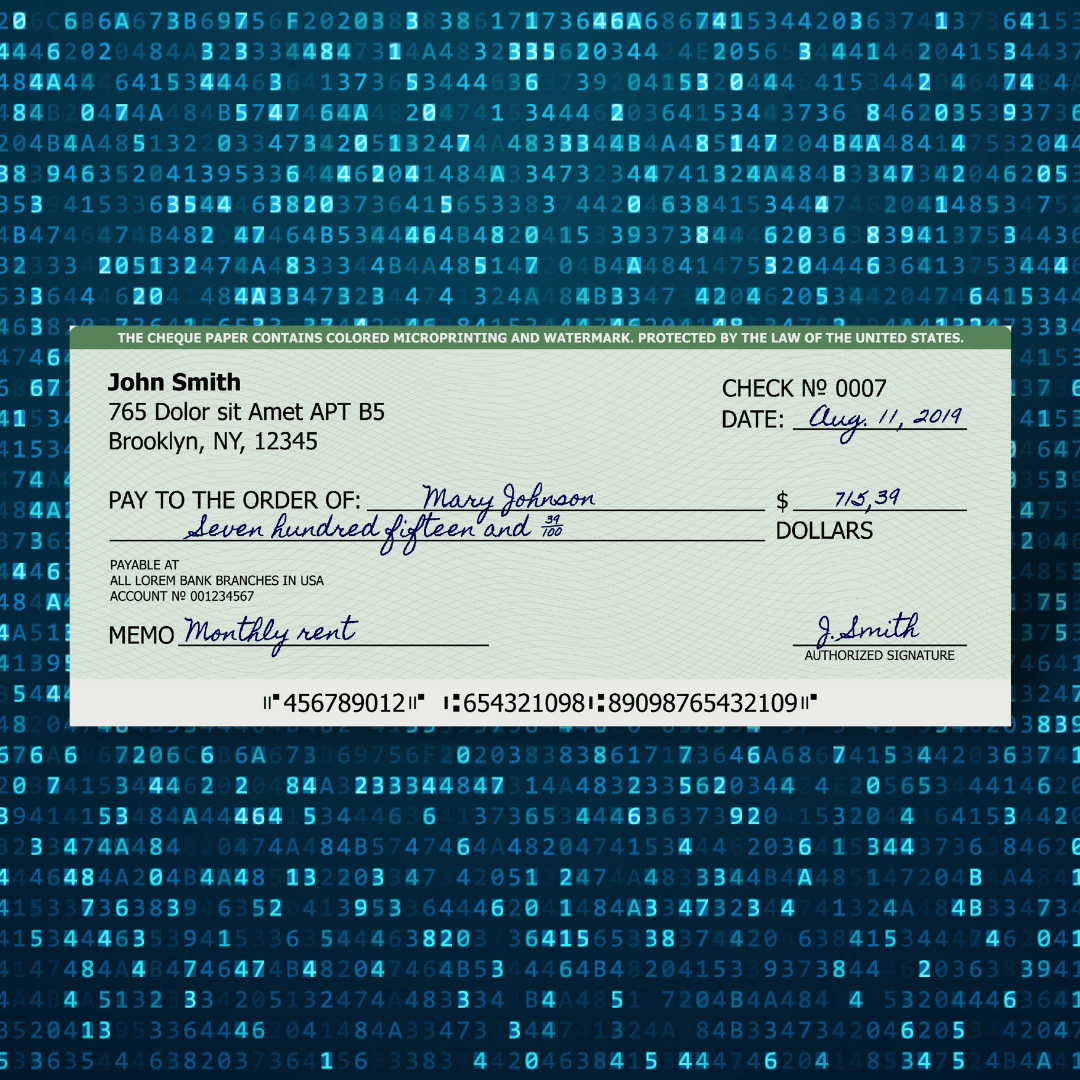
MICR and OCR codeline reading
MICR and OCR, magnetic ink character recognition and optical character recognition respectively, are two different technologies used for check codeline reading which ensure a correct payment flow thanks to decoding accuracy. All checks feature a codeline printed near the lower edge, which is readable both by humans and by machines at very high speed.
While MICR is based on the recognition of the waveforms generated by the magnetic ink, OCR relies on the interpretation of images of printed or typed text based on the characters’ shape. MICR is an algorithm that recognizes a set of electrical pulses produced by each character, whereas OCR is rather based on samples, and it needs to be trained.
-
Reliable
A combined approach to significantly reduce mistakes.
-
Fast
Codeline reading speed up to 160 documents per minute.
-
Efficient
Panini’s MICRPlus best-in-class check codeline reading system.

The challenges of codeline reading
Magnetic reading is accurate and fast, but characters can sometimes be conflated because their wavelengths are similar. In case of doubt, the visual difference between characters will sometimes be more useful than their waveform shapes’ difference – and that’s where optical reading can help.
However, the binarized (black & white) image of the codeline is not always clean, easy to frame, and with proper character alignment: in real life we face misaligned chunks, decorated backgrounds, signatures and stamps invading the codeline area, etc., all occurrences which can make decoding much trickier.
Read error vs. Misread
Moreover, while a dubious character returned as a “?” just needs manual correction by a banker, an operation that takes a few seconds, a misread character (with no error notification) could cause much more damage, since the funds could be subtracted from the wrong bank account.
To avoid such damage, machines must therefore learn to classify characters by being “shown” thousands of samples, and being “taught” what the right answer is for each: this extensive training enables a virtuous balance between the system’s reliability and its fault-tolerance to the extremes.

"We needed a check scanner that could handle the typical Bank of Ireland paper mix, and provide a quick end to end process, superior MICR read rates and high quality images"

Panini’s formula for reliable MICR and OCR codeline reading
The cooperation of MICR and OCR technologies is key to achieving the best read results. After selecting tens of thousands of real checks and carefully balancing them between standard and limit conditions, we designed our own optical read CNN (Convolutional Neural Network): the result proved to be very accurate but, predictably, slower than magnetic-only algorithms; therefore, we decided to keep MICR reading as our front-line strategy when confidence levels on wavelength decoding are high; conversely, when one or more characters show poor confidence the CNN supplies its own optical response—further reducing errors and preventing misreads.
The resulting method, MICRPlus, is one of the best-in-class magnetic codeline reading systems available on the market, and still allows our scanners to perform at up to 160 documents per minute.





